Crypto Academy / Season 3 / Week 2 - Homework Post for Professor @asaj : Intermediate Course: Market Psychology & Trading Psychology
This is my homework post for Steemit Crypto Academy Season 3 Week 2 for Professor @asaj’s lesson Intermediate Course: Market Psychology & Trading Psychology.

Part A (Case Study)
The case study given is an example of what type of psychology? Explain the reason for your answer.
The case study given in the lecture is categorized into trading psychology, because the case is about a particular person (Jane) and not about the psychology of a group of people. It is pure about what happened with Jane psychology, how she reacted to every new development on her investment, that led to her decision in her investment.
Using the case study, list and explain at least 5 biases that influenced Jane's trading behaviour with examples of how it affected her behaviour?
I think these five biases occured in the case study:
1) Emotional Bias
Jane experienced this bias because she made investment based on her feeling. When her investment go up after a few day, she did not take other factors into account, her expectations for the investments she made increased (she experience high hope). And she seemed to become greedy, when the price went up higher she decided to hold on any longer with the thought that she will make more profit.
2) Disposition Bias or Loss Aversion Bias
When the market started to go different way and the coins she invested in has a drop in the price for some period, Jane did not admit that it was a mistake to keep holding the coins. She hoped that the price will continue goes down, and when it did so she bought more.
3) Confirmation Bias
This bias is displayed when people select information that supports their views and ignore any contrary information. In Jane's case, she believed that she made a good decision about selling all her coins in the downtrend phase. That belief was supported by reports of the coin's depreciating value. Jane was happy that she stopped her loss before she loss more than she already did. She ignored the possibility that the asset price could go up again.
4) Self-Attribution Bias
Self-attribution bias is individuals' tendency to attributes successes to their own personal skills and failures to factors beyond their control. For example, a kid is good in math, than he says that it was because he has been studying hard on this subject, but when he got bad marks for biology, it was because he couldn't find more time to study biology because the math teacher gave him so many homeworks.
In Jane's case: at first, Jane knew that she has made a good decision by investing in a crypto asset when the asset price was going up, she felt very good about herself. And then she saw that the price was going down, at at some point it hit the stop loss. When the price was going up again,she blame the stop loss for had automatically sold all her assets and left her with big loss.
5) Herd Mentality Bias
It occurs when a person rationalizes they action to the fact that everyone else is doing it. So, "If everyone else is doing it, it must be the right thing to do, right?" That's what happened to Jane. She read a recommendation on a Telegram group and follow the recommendation by investing in the recommended crypto asset.
The second time Jane experienced this bias was when she put that stop loss. Stop loss is a way to automatically sell the asset. The chart will hit it when there's negative sentiment in the market. It's like telling the market to sell the assets when everybody else is doing that.
List and explain how each bias you have mentioned can be avoided?
1) Emotional Bias
Emotional bias can be avoided by learning related information about the decision to be made. In Jane's case, she could learn more before starting her investment, so she can make profit or at least avoid to lose big. Don't get the hope too high because the market is a very fluctuative place, and don't be greedy. Making a little profit is always better than to have to face the loss.
2) Disposition Bias or Loss Aversion Bias
After some times, the price of an asset will be corrected. When the price seems to start going down, we can consider to make sell. That way we can still make profit.
3) Confirmation Bias
We can avoid this bias by acting reasonably. We can't just see and consume information that supports our beliefs. We must also seek and consider any information that contradicts our beliefs. By comparing these two types of information, we can make a better, possitive decisions.
4) Self-Attribution Bias
We can give credit as a form of appreciation to ourselves, just as we must also be ready to accept that we too can make wrong decisions. Learn all the information that can be obtained before making a decision and be ready to accept that this decision could end up not as expected, with it we learn how to make better decisions in the future.
5) Herd Mentality Bias
We need to realize that truth or lie and right or wrong do not depend on how much people believe in them or practice them. Wrong actions are wrong even if everyone is doing them. Likewise, right actions are right even if no one is doing them. When it comes to trading, the key remains to gather as much knowledge and information as possible in order to understand what is going on in the market and with which we can make the best decisions. Don't just follow the trends that are built in the market.

Part B (Research & Analysis)
What type of analysis can be used to monitor market psychology and trading psychology, and why? Identify the differences between trading psychology and market psychology.
Market psychology and trading psychology can be monitored with the technical analysis. Because technical analysis is a tool to examine and predict price movements in the financial markets, by using historical price charts and market statistics. With this tool, we can examine the price chart and understand the psychology which is building in the market. Because the price chart shows information about what happens in the market, then it show the market psychology. While trading psychology is the way an individual acted and reacted to market (news and price movement).
The difference between trading psychology and market psychology is that the trading psychology is about an individual person's psychology on acting and reacting in the market, while the market psychology is the aggregation of all participants' psychology that build a trend in he market.
| Trading Psychology | Market Psychology |
|---|---|
| Individual | Communal |
| Takes shorter time to recognize the pattern | Takes more time to build a pattern |
| Not available for public access | Public can learn about it by observing the chart |
How can you measure market psychology using a crypto chart? Select 5 trading biases and explain with screenshots of any cryptocurrency chart how the biases can cause a coin to be oversold and overbought.
How can you measure market psychology using a crypto chart?
Observing the trend on a chart helps us understand market psychology, whether it is in positive or negative state. The phases: accumulative, uptrend, distribution, or downtrend will tell us the market psychology. The uptrend tells us that market psychology is in positive state, while the downtrend tells us otherwise.
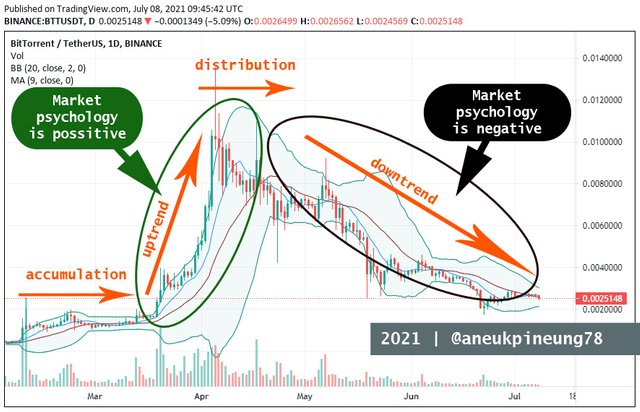
The TradingView BTTUSDT chart, 1 day timeframe, as seen on https://coinmarketcap.com/currencies/bittorrent/. Select 5 trading biases and explain with screenshots of any cryptocurrency chart how the biases can cause a coin to be oversold and overbought.
- 1) Emotional Bias
When an uptrend or downtred is forming in the market, acting based on feeling is not a wise thing to do. When you see something like a start of an uptrend, it might be a good time to invest, but after some period of time you should remind yourself to not getting greedy. Getting greedy and over convident in this market phase will make you end up overbuy an asset.
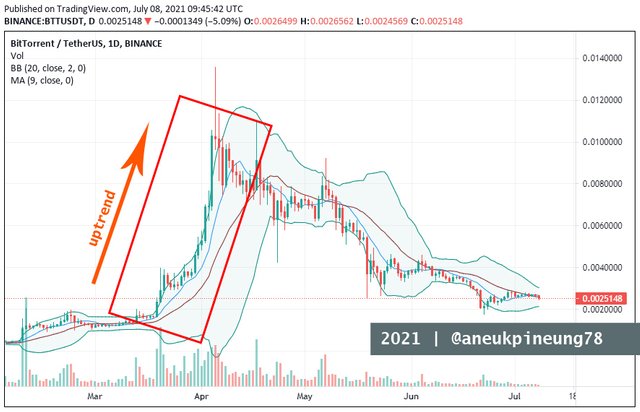
- 2) Disposition Bias
When the chart starts the opposite tren, starts to go down, disposition bias could lead to overbuy. It happened to people who have too high hope for the future of the asset. They consider this is the good time to make investment and not the other way around. Instead of feeling worry, they're getting happy of the condition.
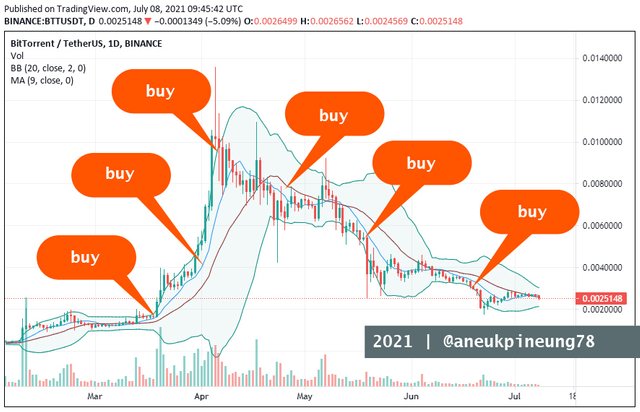
- 3) Confirmation Bias
It could happen when the market psychology is in positive state or in negative one. People who have been holding their assets for some times when the market keeps showing the uptrend will build more convident in themselves out of the feeling that they have been making the right decision to keep holding on, and they could also buy more assets that will lead to overbuy when the chart suddently makes move to another direction. The same could happened when the market psychology is in negative state: one who has seen the building of the downtrend, could hurry sell all their assets and ignoring the possibility and signals that the price could rise up again in nearly time.
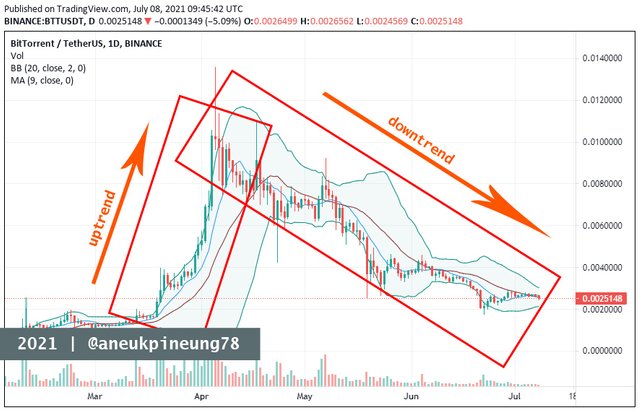
- 4) Self-Attribution Bias
When a person feels satisfied and proud of himself for having made a good investment in a crypto asset that continues to show an increase in price, after a long time he increases his investment because he thinks he has understood the crypto asset market, without taking into account other signals and information, most likely he will overbuy the crypto asset.
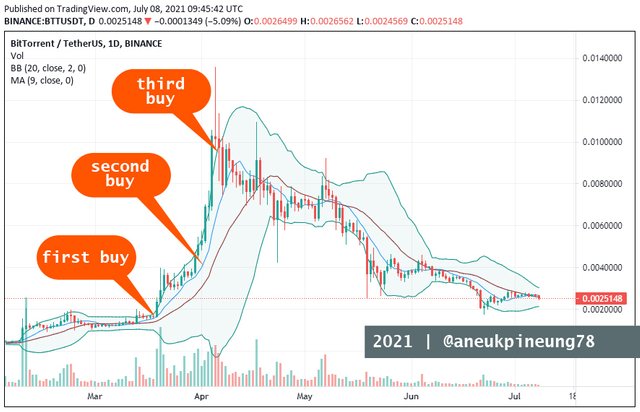
- 5) Herd Mentality Bias
When you see the price chart of an asset is so promising, and the people around you keep talking about it, you think, "Everyone is buying this, why won't I?" So you decided to put whatever you have in the asset, without getting enough information and projection of the asset future price. Not long after, the signals that you missed take action and brings the chart movement to another direction.
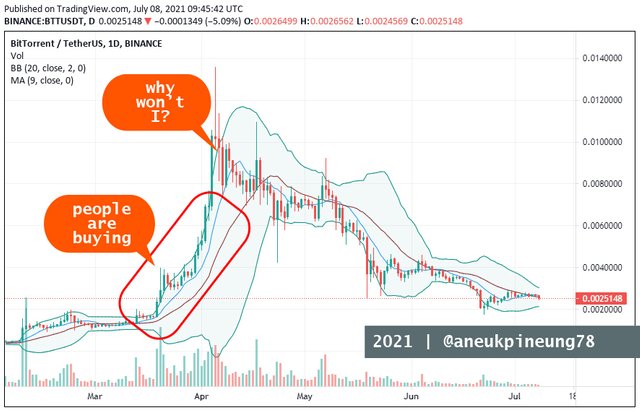
- 1) Emotional Bias
In your own words, define the term Efficient Market Hypothesis (EMH). List and explain the advantages and disadvantages of Efficient Market Hypothesis (EMH).
Define the Term Efficient Market Hypothesis (EMH)
Efficient Market Hypothesis (EMH) or Efficient Market Theory is a hypothesis which shows that the price of an asset reflects all the information in it. Adherents of this theory believe that technical and fundamental analysis is completely useless for predicting trends in the market. Take shares for example. Even though the price goes up and down, actually shares are always traded according to their fair value. Through this concept we can know that someone will not be able to continuously get profits above the average market return (beat the market).
The debate about this theory continues, although many academics able to show evidences to support the theory which was proposed by Eugene Fama (born February 14, 1939 (age 82)), but opponents are also able to show evidences that this theory is not entirely true.
Efficient Market Hypothesis (EMH) is classified to 3 forms:
- Weak EMH. This theory implies that there is no information that can show how the market and stock prices move.
- Semi-strong EMH. This theory implies that the stock value is a description of all relevant information that can be known by the public. This information includes financial statements, interest rates and other matters relating to the company. From this hypothesis it can be concluded that stock prices can be predicted by the public by looking at the available information.
- Strong EMH. This theory states that all publicly accessible and confidential information can reflect stock prices. This means that all relevant information circulating in the public or information from insider information (such as management and the board of directors) can be a way for investors to determine their investment steps.
List and explain the advantages and disadvantages of Efficient Market Hypothesis (EMH)
- Advantages
Because in Weak EMH it is believed that technical and fundamental analysis absolutely cannot be used to predict future asset price movements, and in Semi-strong EMH it is stated that asset prices reflect all information that the public needs to know, and Strong EMH states that confidential and information publicly accessible information can reflect asset prices, hence, the advantages are:
it frees investors from losing money by following the advice of people claiming to be technical or fundamental analysis experts;
it prevents investors from buying blindly any assets offered by people who claim to be experts in investment;
it saves all potential investors time from studying information and working with tools (ie technical and fundamental analysis) to predict future asset prices;
Disadvantages
However, the disadvantage of the EMH is that it's causing investors to skip the activities of gathering a more and thorough information about an asset and testing it with technical and fundamental analysis, while the fact is that these things (information and the analysis tools) have been proven to be able to help traders in making transactions in the market.
Thanks
Thanks Professor @asaj for the lesson titled Intermediate Course: Market Psychology & Trading Psychology.
Pictures Sourcing
- The editorial picture was created by me.
- All another pictures were screenshoots and were edited with Photoshop CS 3.
Sources and Reading Suggestion
- https://thedecisionlab.com/biases/anchoring-bias/;
- https://www.investopedia.com/articles/investing/050813/4-behavioral-biases-and-how-avoid-them.asp
- https://www.sciencedirect.com/science/article/abs/pii/S2214804314000597;
- https://en.wikipedia.org/wiki/Confirmation_bias;
- https://www.verywellmind.com/what-is-a-confirmation-bias-2795024;
- https://www.investopedia.com/articles/active-trading/102914/technical-analysis-strategies-beginners.asp;
- https://www.investopedia.com/terms/e/efficientmarkethypothesis.asp;
- https://klc.kemenkeu.go.id/efficient-market-hypothesis/;
- https://www.akseleran.co.id/blog/hipotesis-pasar-efisien/;
- https://en.wikipedia.org/wiki/Eugene_Fama;
- https://www.letslearnfinance.com/efficient-market-hypothesis-advantages-and-disadvantages.html;
- https://www.kompasiana.com/chandrayusufsh/57fdd94e8323bd9517b5a129/efisiensi-pasar-modal-yang-memberikan-keadilan;




Shares to Twitter : https://twitter.com/aneukpineung78a/status/1413533151528325121.
Good presentation of work. Perfect research done on the homework task assigned
Thanks, @abu78, I was just doing my best. Did you submit your work?
Good job @aneukpineung78!
Thanks for performing the above task in the second week of Steemit Crypto Academy Season 3. The time and effort put into this work is appreciated. Hence, you have scored 8 out of 10. Here are the details:
Remarks:
The level of depth you provided in Question 5 is remarkable. That said, this would have been a perfect if you had mentioned other biases instead constraining your anwers to the one mentioned in the homework post. There's availability bias, recency bias, information bias and lots more.
Again, thanks for contributing to the academy, we hope to see more from you in the coming weeks.
Thanks, Professor. Really learn something.